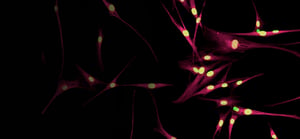
HIGH-CONTENT IMAGING
High-content imaging is a powerful technique for measuring and monitoring phenotypic changes in cells in early drug discovery.
WHAT IS HIGH-CONTENT IMAGING (HCI)?
Most techniques used in biology research and drug development measure only one or two parameters at a time, requiring researchers to significantly distill or simplify their questions on a per-assay basis and to run multiple and varied assays to build their knowledge of if and how a candidate therapeutic works. High-content imaging (HCI) is a one-stop shop – a multi-parametric strategy that generates comprehensive datasets through multiplexing strategically chosen fluorescent dyes and antibodies to visualize and measure diverse biological phenomena.
Practical Considerations for Designing and Executing High-content Screens
Learn about the basic principles and process of high-content screening with tips on how to design a successful assay.
Speaker: James G. Evans, PhenoVista CEO
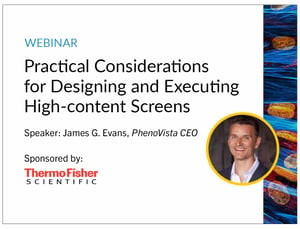
WHAT IS HIGH-CONTENT IMAGING USED FOR?
HCI is used across all areas of biology, from cell and molecular biology to drug screening, and its primary objective is to extract multi-dimensional data from single assay runs through three main steps - image acquisition, image processing, and image analysis. With one in vitro experiment, HCI affords quantitative, phenotypic datasets to evaluate the performance of diverse therapeutic modalities at the single-cell and subcellular levels and provides researchers an understanding of underlying biological heterogeneity across multiple readouts simultaneously, such as pathway activation, cellular localization/translocation, and morphology. The detailed resolution of such readouts allows researchers to explore complex biological questions.
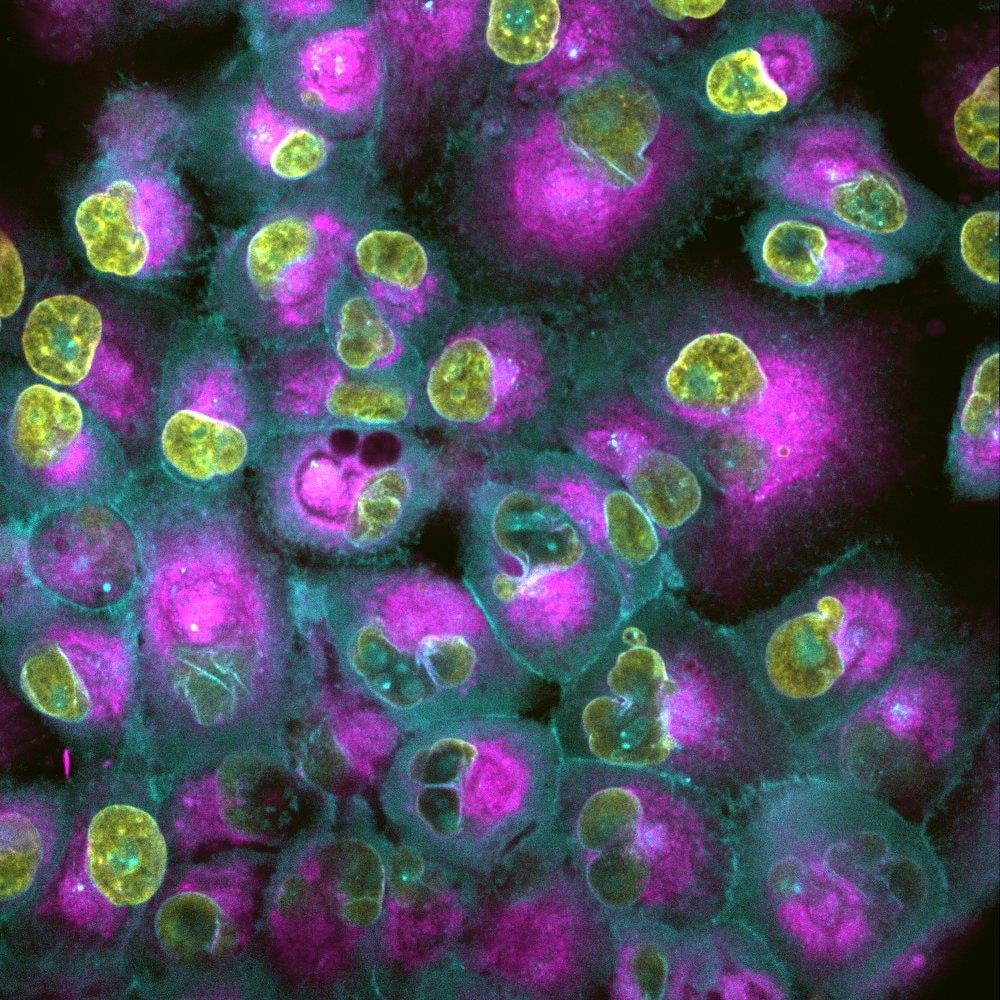

THE ADVANTAGES OF HIGH-CONTENT IMAGING IN DRUG DISCOVERY
Drug development is a costly and oftentimes inefficient process, fraught with material, financial, and time-consuming waste. Still, establishing a comprehensive understanding of how a therapeutic candidate may translate to safe, efficacious treatments is paramount to success. Driving early attrition of non-promising candidates, ideally prior to the late pre-clinical to clinical phases, conserves precious resources for progressing the most viable candidates, and HCI is a multi-layered strategy for generating rich, impactful datasets to increase confidence in drug performance and to inform your go-or-no-go decisions.
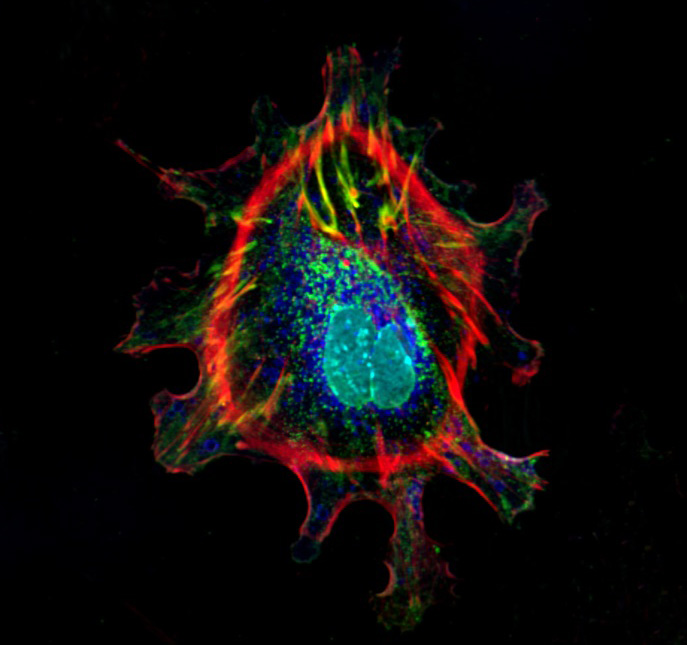
APPLICATIONS OF HIGH-CONTENT IMAGING
HCI is not limited to simple cell models; it can be applied to sophisticated in vitro models, including co-cultures of cell types in 2D and 3D and microfluidic devices. HCI can be performed in live or fixed cells and adapted to medium- and high-throughput formats. The flexibility and broadness of this technique allows researchers and drug developers to customize assays to fit their specific needs and answer questions pertaining, but not limited, to cytotoxicity, target identification, target validation, therapeutic efficacy, mode-of-action determination, and therapeutic delivery.
WORKING WITH PHENOVISTA
We at PhenoVista have built a highly skilled scientific team that specializes in developing and pairing complex, cell-based assay development with cutting-edge imaging and analysis techniques to ensure that our clients maximally benefit from our service offerings and meet their research goals. Our team has access to a diverse, constantly evolving suite of technical resources, including dedicated laboratory automation, imaging instrumentation, and software resources to support project progression.
You can choose from our suite of pre-validated, Ready-2-Go assays or consult with our scientists to design and implement customized experiments that best suit your needs. PhenoVista works collaboratively with you to generate robust, physiologically relevant, human cell-based models to deliver high-value data to accelerate your drug-discovery and development campaigns.
ASSAY SERVICE OFFERINGS
Our expertise lies in the use of physiologically relevant cell models and high-content imaging to get you actionable insights into the effects of your therapeutic agents in various areas of disease research.
![]()
CUSTOM ASSAYS
Custom assays to answer more specific, complex biological questions.
Learn more
![]()
READY-2-GO
Defined, fixed offerings across a range of disease and therapeutic areas.
Learn more
![]()
CELL PAINTING
Handle a large number of compounds and compare against known drugs.
Learn more
![]()
IMAGING & ANALYSIS
You send us plates with cells that have been fixed & stained, we'll send you data.
Learn more
OUR PEOPLE SET US APART
Our team of predominantly PhD-level scientists has diverse expertise ranging from biomedical engineering to neurobiology. We work with clients in a collaborative, adaptable manner to design and implement physiologically meaningful assays to help answer their biological questions. Our team’s diverse repertoire includes working with primary cells, iPSC-derived neurons and glia, and client-engineered lines in a variety of formats such as 2D, 3D, co-culture, and microfluidic systems. Our team delivers unique and cutting-edge functional, structural, and pre-clinical, mechanistic data to clients globally.
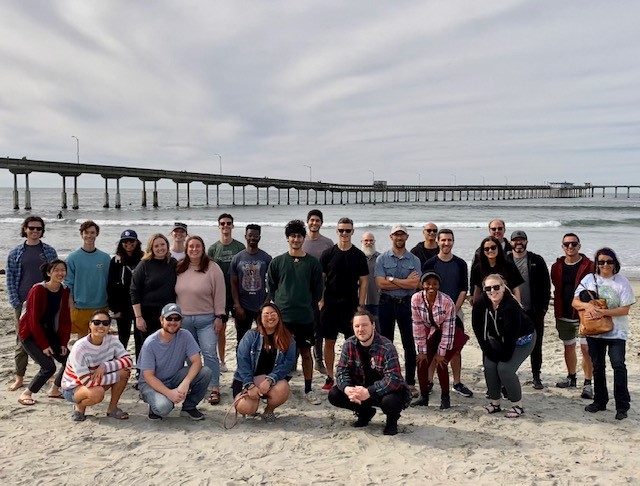
CONTACT US
Let's discuss how we can help with your research.
